-
Is it better to rent a motorbike in Ha Noi or Ha Giang?
Exploring the stunning landscapes of Ha Giang by motorbike is an unforgettable adventure. However, one of the most common questions travelers ask is whether they should rent a motorbike in Hanoi or wait until they arrive in Ha Giang. Each option has its advantages and drawbacks, so it's essential to understand which suits your travel style best.
Cost Comparison: Hanoi vs. Ha Giang
The cost of motorbike rentals varies depending on the location. In Hanoi, motorbike rentals are often slightly cheaper, especially if you're renting for an extended period. However, renting in Ha Giang may be more convenient since many shops specialize in bikes designed for the challenging terrain of the Ha Giang Motorbike Loop. Additionally, rental services in Ha Giang often include support such as free maintenance and assistance in case of breakdowns.

Motorbike Quality and Availability
Finding a high-quality motorbike is crucial for a safe and smooth journey. In Hanoi, rental shops have a wide variety of bikes, from scooters to manual motorbikes. However, the selection may not always be well-maintained for long-distance and rugged terrain. On the other hand, Ha Giang motorbike rental services focus specifically on bikes suitable for the Ha Giang Motorbike Loop, ensuring better performance on steep and rocky roads.
Travel Convenience and Logistics
Renting a motorbike in Hanoi means you will have to ride from the capital to Ha Giang, which is approximately 300 km. This ride can be exhausting for those unfamiliar with Vietnam’s traffic and road conditions. Renting in Ha Giang eliminates this long, tiring journey, allowing you to start the loop feeling fresh and energized. If you prefer a hassle-free experience, taking a bus to Ha Giang and renting a motorbike from a local shop is the better option.
.jpg)
Licensing and Legal Considerations
Vietnam has strict regulations regarding motorbike rentals and international driving licenses. Some rental shops in Hanoi may rent to travelers without a valid license, but this puts you at risk of fines or legal trouble. In Ha Giang, rental agencies are more accustomed to dealing with foreign tourists and can guide you on the necessary permits and paperwork. Additionally, many Ha Giang rental shops offer insurance options, which can be crucial in case of accidents.
Road Conditions and Riding Experience
Riding in Vietnam, especially on the Ha Giang Motorbike Loop, requires a certain level of experience. If you rent in Hanoi, you will have to navigate city traffic and national highways before even reaching Ha Giang. For beginners, this can be overwhelming. Renting in Ha Giang allows you to start on less congested roads, making the transition to mountain riding smoother and safer.
Emergency Support and Assistance
Breakdowns and accidents can happen during a motorbike trip, so having access to quick support is essential. If you rent in Hanoi and experience issues along the way, getting assistance might be challenging. However, renting from Ha Giang ensures that help is nearby. Many rental shops in Ha Giang provide on-call support, replacement bikes, and repair services, giving you peace of mind throughout your journey.

Accommodation and Rental Packages
Many rental services in Ha Giang offer bundled packages that include accommodations at places like Ha Giang City Hostel. This can be a great way to save money and ensure a seamless travel experience. Hanoi rentals typically do not provide such services, meaning you'll need to book accommodation separately.
Final Verdict: Hanoi or Ha Giang?
Ultimately, renting a motorbike in Ha Giang is the better choice for most travelers. While renting in Hanoi may save a little money, the convenience, better bike quality, and specialized services in Ha Giang outweigh the minor cost difference. If you are planning to explore the Ha Giang Motorbike Loop, renting from a reputable shop in Ha Giang will ensure a safer and more enjoyable experience.
PR -
What to look for when renting a motorbike in Ha Giang
Renting a motorbike is the best way to experience the stunning landscapes of Ha Giang. Whether you're planning to ride the famous Ha Giang Motorbike Loop or explore the province at a slower pace, choosing the right motorbike is crucial for a safe and enjoyable trip. This guide will help you understand what to look for when renting a motorbike in Ha Giang, ensuring a hassle-free adventure.
Choosing a Reliable Rental Shop
The first step in securing a good motorbike is finding a trustworthy rental provider. Many businesses in Ha Giang City offer motorbike rentals, but not all maintain their bikes well. Look for shops with positive reviews, transparent pricing, and excellent customer service. Many Ha Giang City hostels also offer motorbike rentals, which can be a convenient option as they often include basic travel guidance and support.
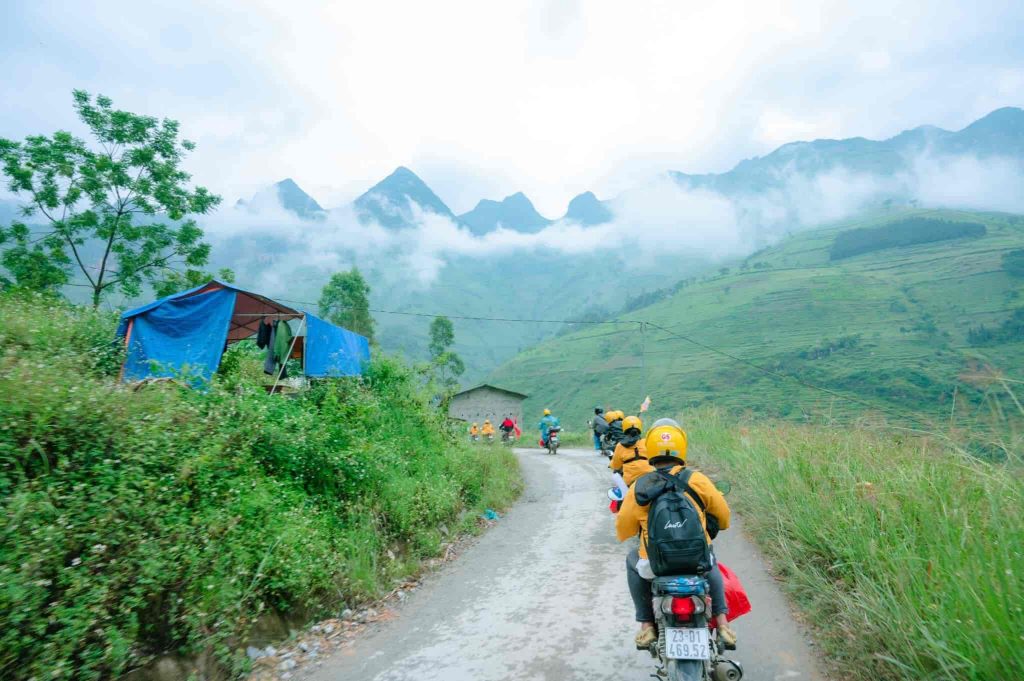
Selecting the Right Type of Motorbike
Ha Giang's mountainous terrain requires a motorbike that can handle steep climbs, rough roads, and long distances. Automatic scooters may seem convenient, but they are not ideal for the Ha Giang Motorbike Loop due to their lower power and lack of control on steep descents. Instead, consider renting a semi-automatic or manual motorbike, such as a Honda XR 150 or Honda Win, which provide better performance on challenging roads.
Inspecting the Motorbike Before Renting
Before committing to a rental, thoroughly inspect the motorbike to ensure it’s in good condition. Check the following components:
-
Brakes: Squeeze both the front and rear brakes to make sure they work properly.
-
Tires: Ensure they have enough tread and are not worn out.
-
Lights & Signals: Test the headlights, brake lights, and turn signals to confirm they function correctly.
-
Engine & Exhaust: Start the motorbike and listen for any unusual noises or excessive smoke from the exhaust.
-
Suspension: Press down on the seat to check for good shock absorption, which is essential for bumpy roads.
-
Chain & Gears: The chain should be well-lubricated and properly tightened, while gears should shift smoothly.

Understanding Rental Costs and Policies
Rental prices vary depending on the type of motorbike, rental duration, and additional services. On average, a semi-automatic bike costs around $10 per day, while a manual dirt bike may cost $15-$25 per day. Make sure to clarify the following details before renting:
-
Deposit and Identification: Some shops require a passport copy or cash deposit.
-
Insurance: Ask if the rental includes insurance or if you need to purchase separate coverage.
-
Breakdown Support: Check if the rental company provides roadside assistance in case of mechanical issues.
-
Return Policy: Understand the return time, fuel requirements, and any late fees.
Ensuring Safety Gear and Accessories
A good rental shop should provide safety gear along with the motorbike. At a minimum, you should receive:
-
A DOT-approved helmet with a secure strap
-
Protective gloves to improve grip and comfort
-
Rain poncho or waterproof jacket
-
Luggage rack or bungee cords for securing your bags
-
Phone holder and charging port (useful for navigation)
If the shop does not provide these items, consider bringing your own for added safety and comfort.
Planning Fuel Stops and Navigation
While exploring the Ha Giang Motorbike Loop, fuel stations can be scarce in remote areas. Always fill up your tank before leaving Ha Giang City and top up whenever you see a gas station. Additionally, having offline maps downloaded on your phone will help you navigate without relying on internet service. Some Ha Giang City hostels provide printed maps or GPS devices for rent, which can be useful for first-time riders.

Knowing Basic Motorbike Maintenance
Even with a well-maintained bike, minor issues can arise on the road. Learn a few basic repair skills, such as:
-
Checking and refilling engine oil
-
Tightening loose bolts or screws
-
Adjusting the chain tension
-
Fixing a flat tire (or knowing where to find repair shops along the route)
Being prepared will save you time and stress if you encounter minor mechanical problems.
Conclusion
Renting a motorbike is an exciting part of any Ha Giang adventure, but choosing the right rental is essential for safety and enjoyment. By selecting a reliable rental shop, inspecting the motorbike carefully, and understanding the rental policies, you can have a smooth experience on the Ha Giang Motorbike Loop. Plan your trip wisely, wear proper safety gear, and take advantage of the support available from Ha Giang City hostel to ensure a worry-free journey.
-
-
First time in Ha Giang? A beginner’s travel guide
Ha Giang is one of Vietnam’s most breathtaking travel destinations, offering stunning landscapes, rich cultural experiences, and thrilling motorbike adventures. If you’re visiting for the first time, planning your trip carefully is essential to making the most of your journey. This guide covers everything you need to know, from the best time to visit to accommodation and transportation options.
Best Time to Visit Ha Giang
Ha Giang weather plays a crucial role in your travel experience. The best times to visit are spring (March to May) and autumn (September to November). During these seasons, the temperatures are mild, the skies are clear, and the scenery is at its most vibrant. Spring brings blooming flowers, while autumn showcases golden rice terraces. The summer months (June to August) can be hot and rainy, making roads slippery, while winter (December to February) can be quite cold, especially in the high mountains.

How to Get to Ha Giang
There is no airport in Ha Giang, so most travelers take a bus from Hanoi. The journey takes around 6–7 hours, with options for both daytime and sleeper buses. Private cars or motorbike rentals are also available for those who prefer a more flexible schedule. If you plan to ride the Ha Giang Loop, you can rent a motorbike upon arrival in Ha Giang City.
Choosing the Right Accommodation
Ha Giang has a variety of accommodation options, from budget-friendly hostels to comfortable homestays. Many travelers opt for Ha Giang Loop hostels, which provide not only lodging but also motorbike rentals and travel tips. If you prefer an authentic experience, staying in a local homestay allows you to immerse yourself in the culture and hospitality of ethnic minority communities.
Exploring the Ha Giang Loop
The Ha Giang Loop is the highlight of any Ha Giang travel experience. This 350-kilometer circular route takes you through dramatic mountain passes, remote villages, and scenic valleys. The loop typically takes 3–5 days to complete, depending on your pace. If you're new to motorbike travel, consider joining a guided tour for added safety and convenience.
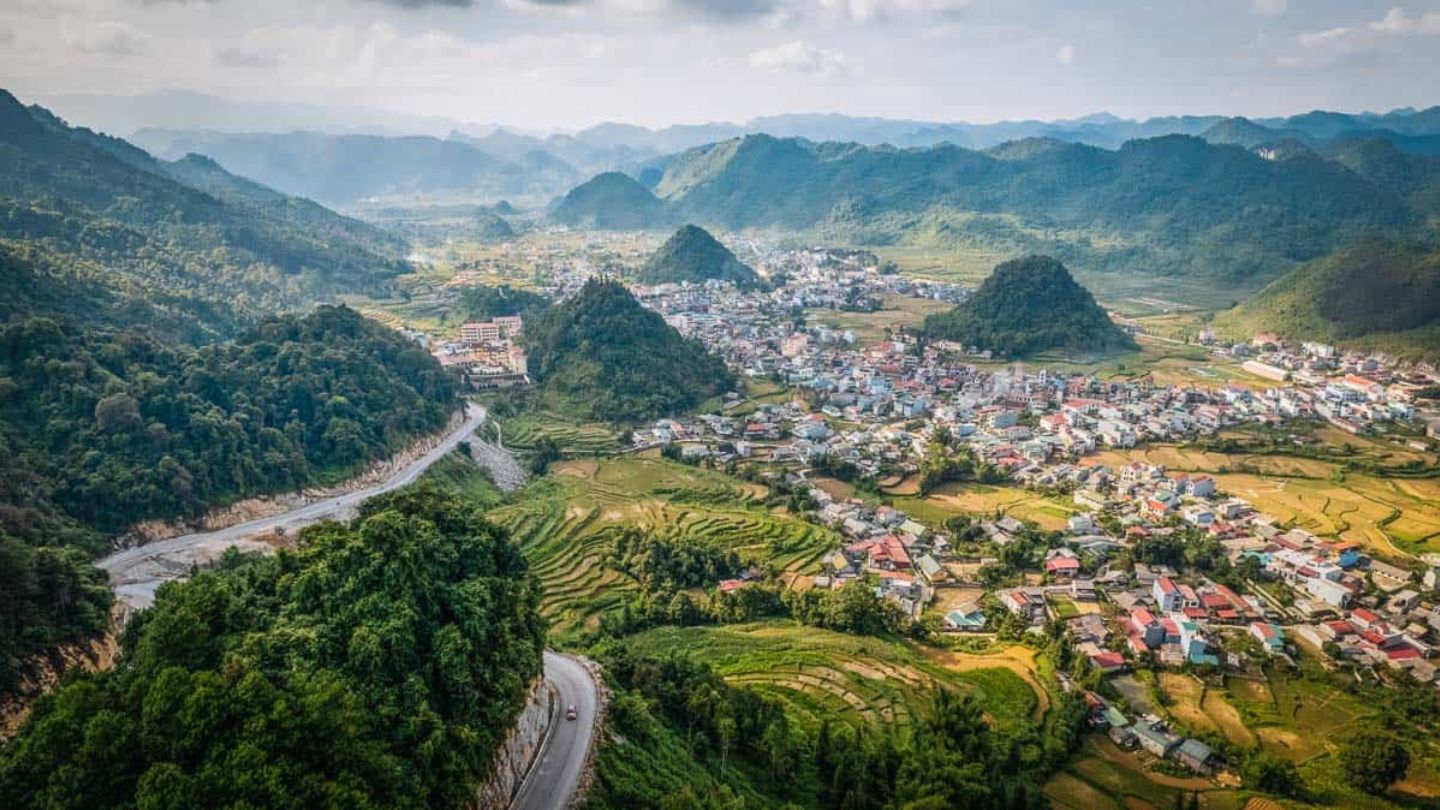
Essential Packing List
Packing appropriately is crucial, as Ha Giang weather can be unpredictable. Essential items include:
-
A high-quality helmet and protective riding gear
-
Waterproof clothing for unexpected rain
-
Warm layers for chilly mountain nights
-
Sunscreen and sunglasses for daytime rides
-
A power bank and backup batteries
-
Cash, as ATMs are scarce in remote areas
Experiencing Ha Giang’s Culture
Ha Giang is home to various ethnic minority groups, each with unique traditions, clothing, and cuisine. Markets like Dong Van and Meo Vac offer a glimpse into local life, where you can sample traditional foods and purchase handmade crafts. Respecting local customs, such as asking for permission before taking photos and dressing modestly, ensures a more positive cultural exchange.
Staying Safe on the Road
For first-time travelers, road safety is a top priority. The mountain roads are winding and can be challenging, especially for beginners. To ensure a safe journey:
-
Ride cautiously and avoid speeding
-
Take breaks to rest and enjoy the scenery
-
Always wear a helmet and protective gear
-
Be mindful of weather changes that may affect road conditions

Conclusion
Ha Giang is an unforgettable destination, offering both adventure and cultural immersion. By understanding Ha Giang weather, booking the right Ha Giang Loop hostels, and preparing for the challenges of mountain travel, you can make the most of your first visit. Plan wisely, respect the local culture, and enjoy the beauty of this remarkable region.
-
-
Common travel mistakes in Ha Giang & How to avoid them
Ha Giang is a dream destination for travelers seeking stunning landscapes, rich cultural experiences, and thrilling motorbike adventures. However, planning a trip to this remote province requires careful preparation. Many travelers make common mistakes that can affect their experience. Understanding these pitfalls and how to avoid them will help ensure a smooth and enjoyable journey.
Underestimating Ha Giang Weather Conditions
One of the biggest mistakes travelers make is not preparing for Ha Giang weather. The region experiences dramatic temperature changes, heavy rain in the wet season, and cold winds in the winter. Without proper clothing and gear, your trip can become uncomfortable or even dangerous. Always check the weather forecast before your trip and pack accordingly. A rainproof jacket, warm layers, and proper footwear are essential for unpredictable conditions.
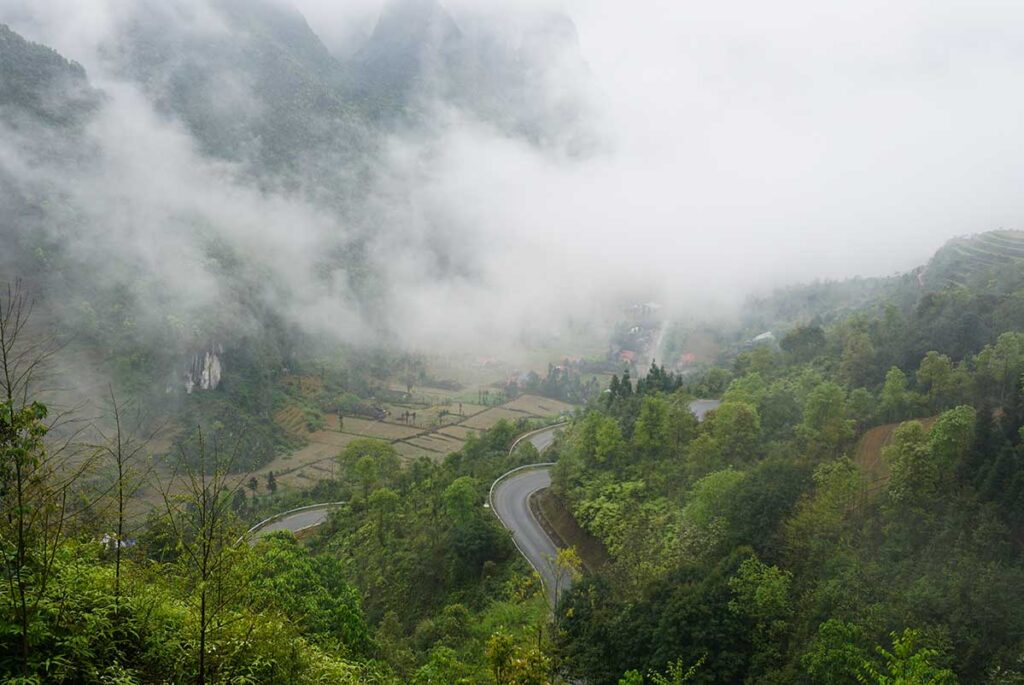
Choosing the Wrong Time to Visit
Timing is crucial when planning your Ha Giang travel experience. Some travelers visit during peak rainy seasons (June to August), when landslides and slippery roads make traveling difficult. Others arrive during extreme winter months (December to February) without proper gear for the cold. The best time to explore Ha Giang is during autumn (September to November) or spring (March to May), when the weather is more stable, and the scenery is at its most beautiful.
Not Renting the Right Motorbike
Many travelers opt for the cheapest motorbike rental without considering quality or safety. The Ha Giang Loop requires a reliable, well-maintained motorbike, as the mountainous terrain is challenging. Choosing an older, poorly maintained bike can lead to breakdowns in remote areas. Always rent from a reputable shop, test the bike before starting your journey, and ensure it comes with a helmet and necessary tools.
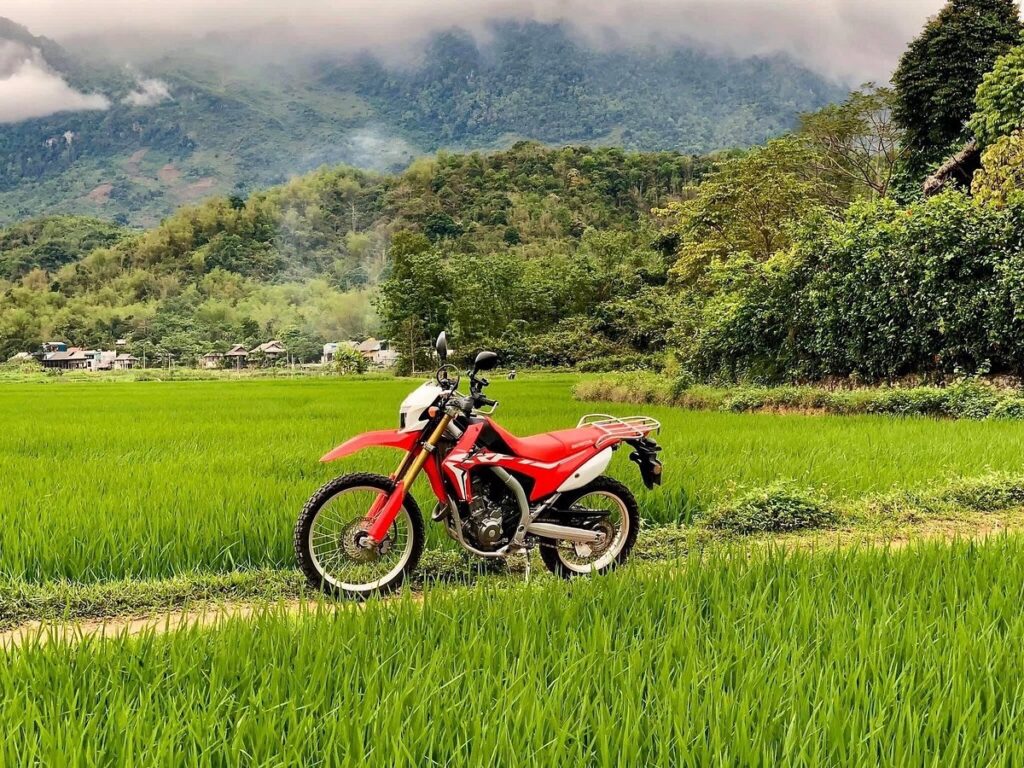
Overpacking or Bringing the Wrong Gear
Another mistake travelers make is overpacking or bringing unnecessary items. Since most travelers on the Ha Giang Loop stay in Ha Giang Loop hostels or homestays, there’s no need to carry excessive supplies. Pack light but efficiently—comfortable clothing, a waterproof bag, a first-aid kit, and some cash (ATMs are rare in remote areas). A power bank is also useful since electricity access can be limited in some villages.
Ignoring Local Traffic Rules & Safety Measures
Many travelers, especially those riding the Ha Giang Loop, forget that local traffic rules can be different from other regions. Roads in Ha Giang can be narrow, winding, and shared with livestock or pedestrians. Speeding, reckless overtaking, and not wearing a helmet are common mistakes that lead to accidents. Always ride cautiously, follow local traffic rules, and wear protective gear to ensure a safe journey.
Not Booking Accommodation in Advance
While Ha Giang is known for its hospitality, many travelers assume they can find a place to stay upon arrival. During peak seasons, Ha Giang Loop hostels and homestays fill up quickly, leaving travelers with limited options. Booking accommodations in advance ensures you have a comfortable place to rest after long rides. It also allows you to choose accommodations that align with your budget and preferences.

Skipping Local Markets & Cultural Experiences
Some travelers focus solely on the scenic routes and overlook Ha Giang’s rich cultural aspects. Skipping local markets like Dong Van or Meo Vac means missing out on authentic experiences, such as tasting local food, seeing ethnic minority traditions, and buying handmade crafts. Engaging with local communities enhances your Ha Giang travel experience and supports local businesses.
Not Carrying Enough Cash
Many areas in Ha Giang do not have ATMs, and credit cards are rarely accepted. Travelers who rely solely on cards often find themselves unable to pay for food, accommodations, or fuel. Always carry enough cash for your journey, especially when visiting remote villages or small markets.
Rushing Through the Ha Giang Loop
Some travelers try to complete the Ha Giang Loop too quickly, covering long distances each day without taking time to explore. This leads to exhaustion and missing out on hidden gems along the way. Instead, plan a flexible itinerary, allowing extra time for unexpected stops, scenic viewpoints, and cultural interactions.

Conclusion
Ha Giang is an incredible destination, but proper planning is essential to avoid common travel mistakes. By preparing for Ha Giang weather, choosing the right motorbike, booking accommodations in advance, and respecting local customs, you can make the most of your adventure. Take your time, travel responsibly, and enjoy everything Ha Giang has to offer.
-
Top 10 must-see places in Ha Giang for every traveler
Ha Giang is a breathtaking destination in northern Vietnam, known for its rugged mountains, scenic valleys, and rich cultural heritage. Whether you're an adventure seeker, a nature lover, or a cultural enthusiast, Ha Giang travel offers something for everyone. Here are the top 10 must-see places that should be on every traveler's itinerary.
Dong Van Karst Plateau
One of the most famous attractions in Ha Giang, the Dong Van Karst Plateau is a UNESCO Global Geopark. The area features dramatic limestone formations, deep valleys, and stunning mountain views. The unique geology, combined with the diverse ethnic cultures, makes this a must-visit destination. Ha Giang weather can be unpredictable here, so be prepared for cooler temperatures, especially in winter.
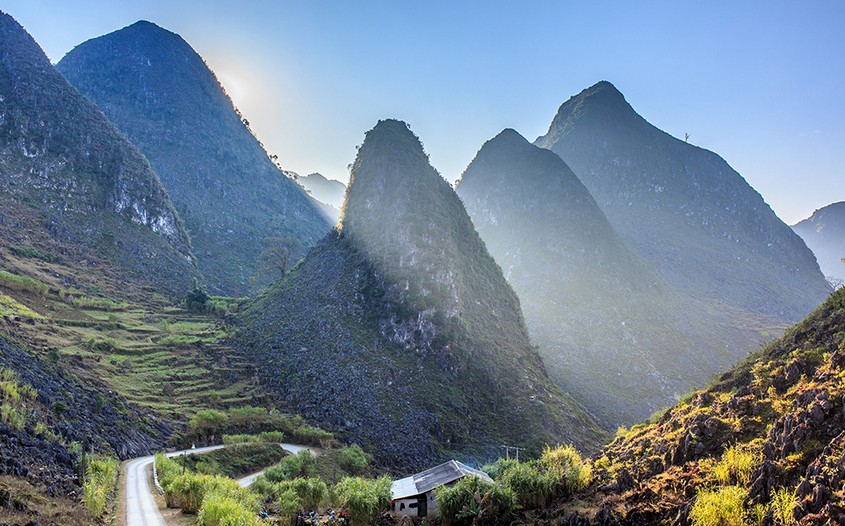
Ma Pi Leng Pass
Often referred to as the "king" of Vietnam's mountain passes, Ma Pi Leng Pass offers jaw-dropping views of the Nho Que River winding through steep cliffs. The pass is a highlight of the Ha Giang Loop, making it a favorite among motorbike travelers. For the best experience, visit during clear weather to fully appreciate the panoramic scenery.
Lung Cu Flag Tower
Lung Cu Flag Tower marks the northernmost point of Vietnam and symbolizes national pride. Climbing to the top rewards visitors with a stunning view of the Chinese border and surrounding mountains. The journey here is an essential part of Ha Giang travel, offering insight into Vietnam’s history and patriotism.

Quan Ba Heaven Gate
Quan Ba Heaven Gate is the gateway to Ha Giang’s mountainous landscapes. The viewpoint offers an incredible panorama of the famous Twin Mountains and the lush valleys below. The cool Ha Giang weather in this region adds to the refreshing and serene atmosphere, making it a great stop for photography and relaxation.
Dong Van Old Town
For those interested in cultural experiences, Dong Van Old Town is a perfect stop. The town features traditional Hmong-style houses, lively local markets, and charming cafes. Staying overnight in one of the guesthouses or Ha Giang Loop hostels allows travelers to soak in the town’s historical ambiance.
Hoang Su Phi Rice Terraces
If you’re visiting Ha Giang between September and October, the Hoang Su Phi Rice Terraces are a must-see. During this time, the golden rice fields create a breathtaking landscape. This area is less crowded than other tourist spots, offering an authentic rural experience. The weather during this season is ideal for trekking and photography.

Du Gia Village
A hidden gem on the Ha Giang Loop, Du Gia Village is known for its peaceful atmosphere, green rice fields, and friendly ethnic communities. Many travelers choose to stay in homestays to experience local life. The nearby Du Gia Waterfall is a perfect spot for a refreshing swim after a day of exploring.
Tham Ma Pass
Another iconic pass in Ha Giang, Tham Ma Pass, features winding roads that challenge motorbike riders. This scenic route is a highlight of the Ha Giang Loop, offering stunning views of rolling hills and deep valleys. It’s a great place to stop for photos and admire the natural beauty of the region.
Meo Vac Market
Held every Sunday, Meo Vac Market is one of the most vibrant ethnic markets in Ha Giang. Here, travelers can witness the diverse cultures of different ethnic groups as they trade goods, livestock, and traditional crafts. The market provides a deep cultural immersion and a chance to taste authentic local food.
Nho Que River & Tu San Canyon
A boat trip on the Nho Que River is a magical experience, allowing travelers to admire the towering cliffs of Tu San Canyon from below. The turquoise water, combined with the dramatic limestone formations, creates a surreal landscape. Whether you’re riding the Ha Giang Loop or staying in Ha Giang Loop hostels, a visit to this natural wonder is highly recommended.

Conclusion
Ha Giang is a destination that captivates every traveler with its stunning landscapes and rich culture. Whether you’re exploring mountain passes, experiencing local traditions, or enjoying breathtaking views, there’s always something incredible to see. Plan your trip wisely, consider Ha Giang weather conditions, and choose comfortable accommodations in Ha Giang Loop hostels to make the most of your adventure.
